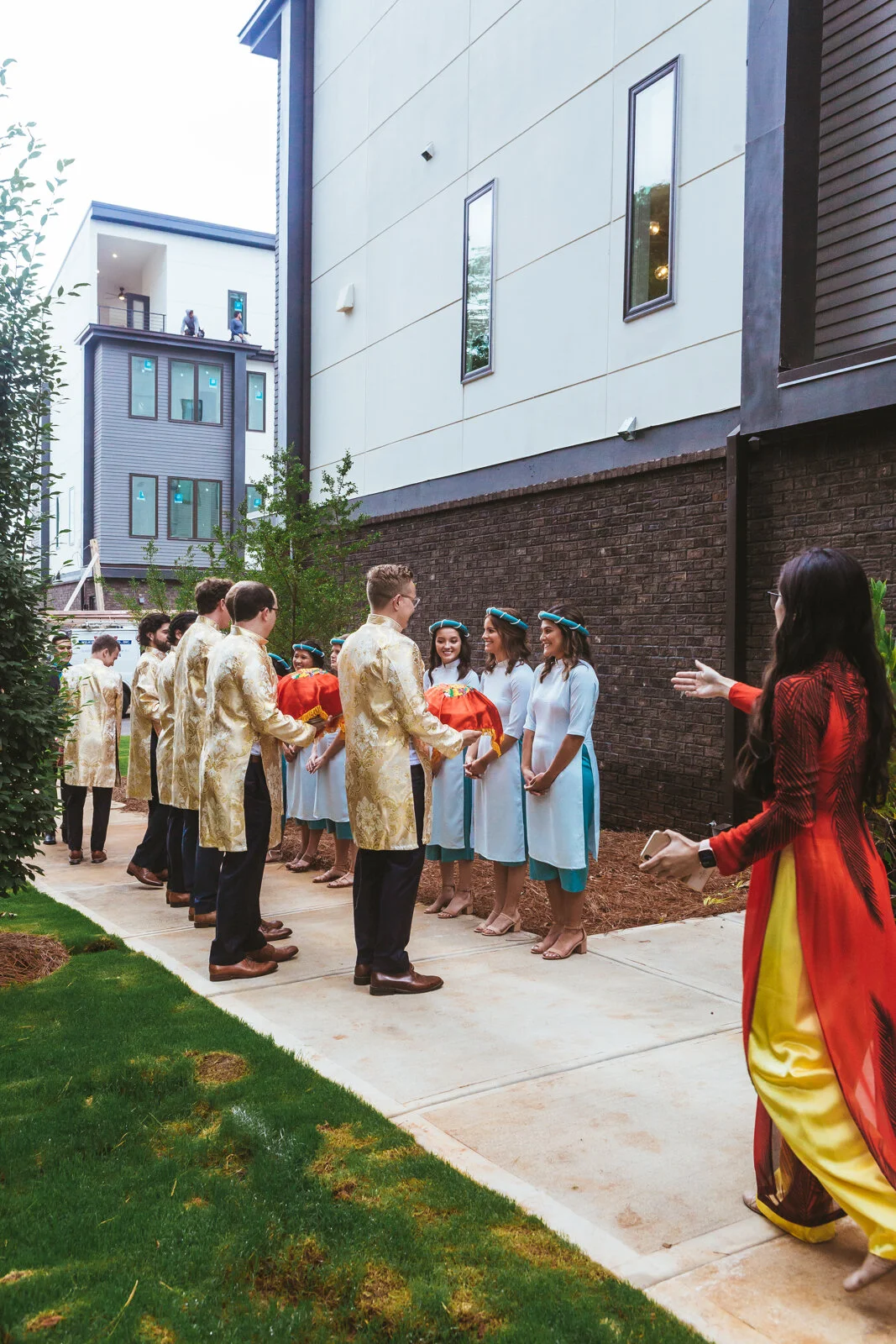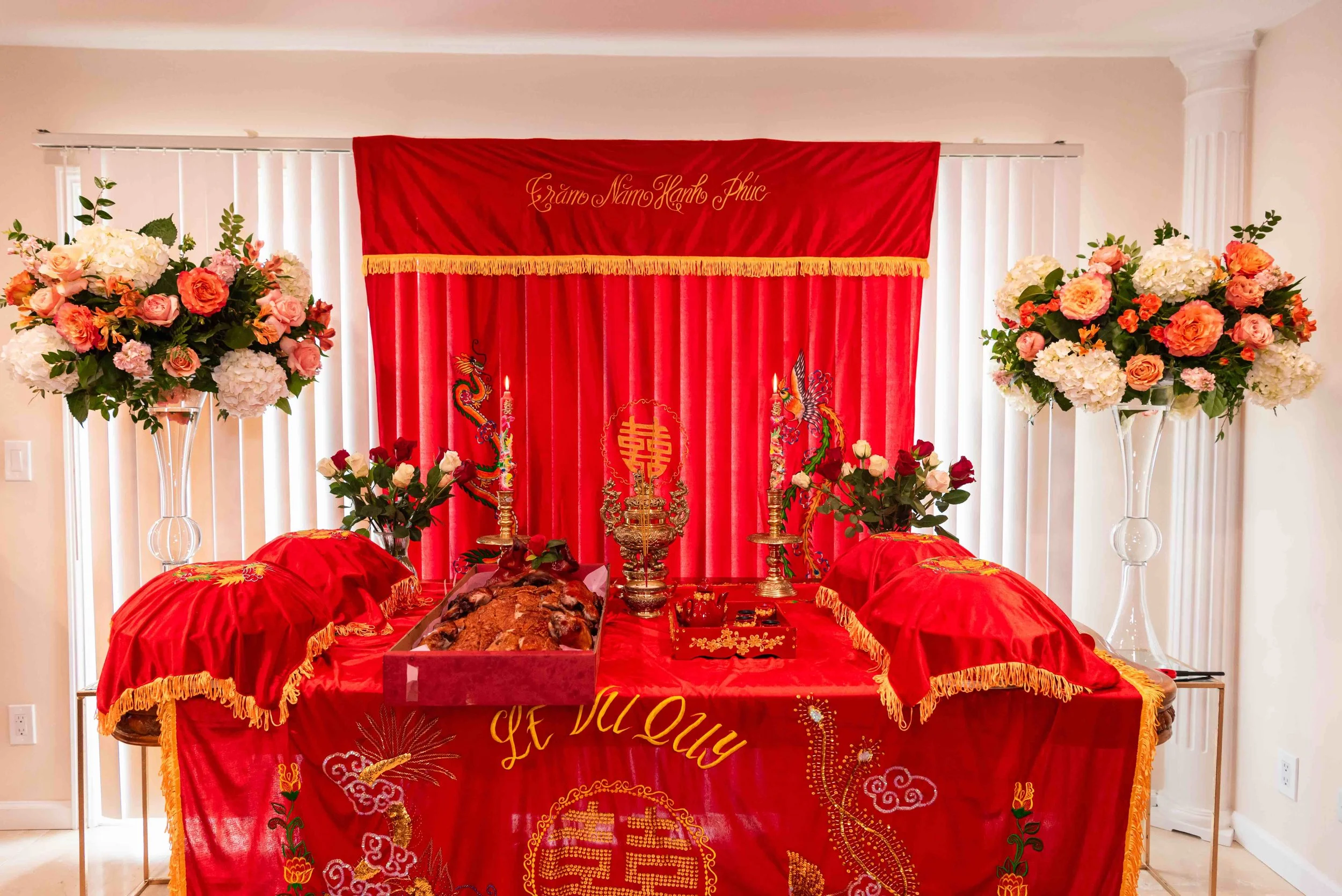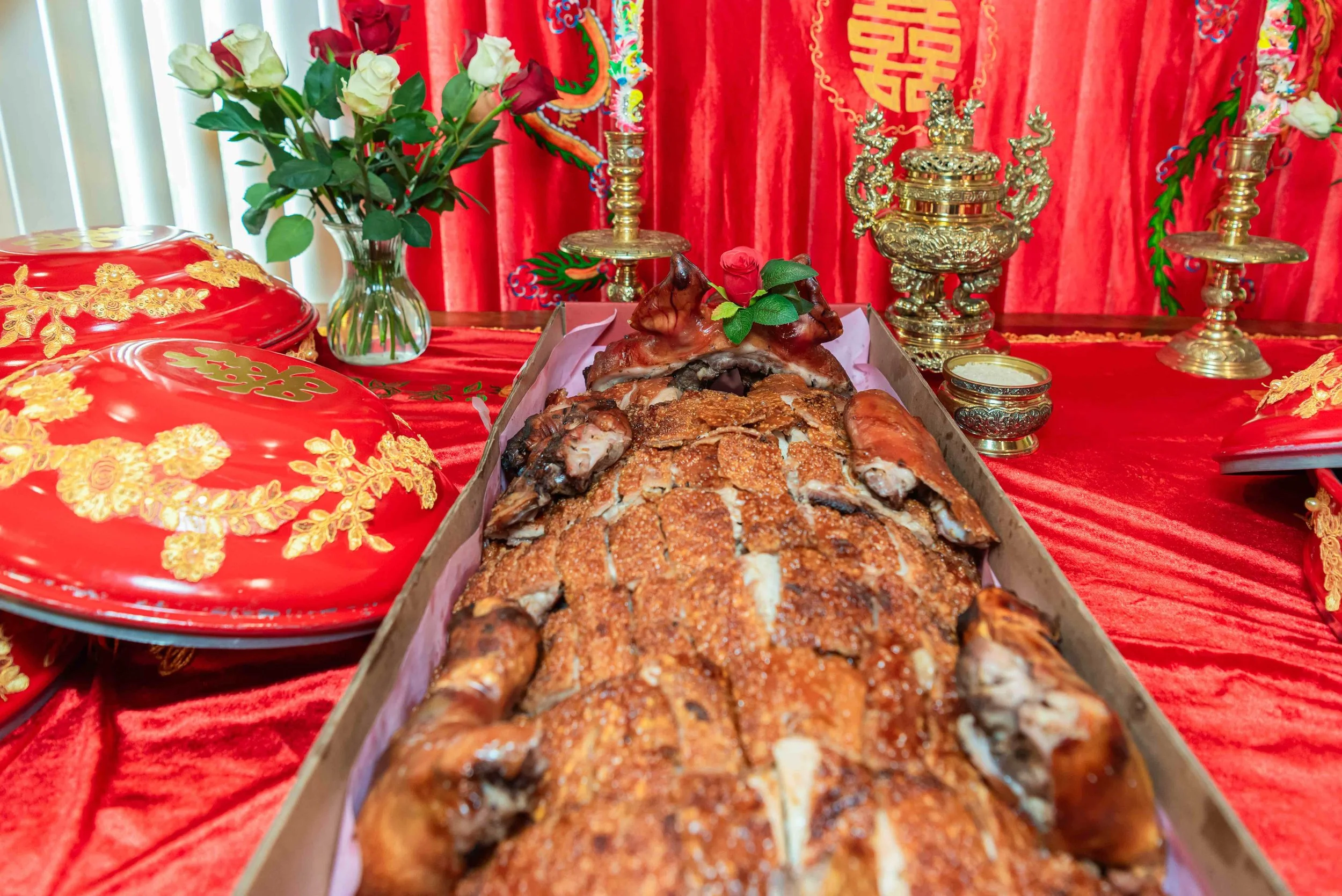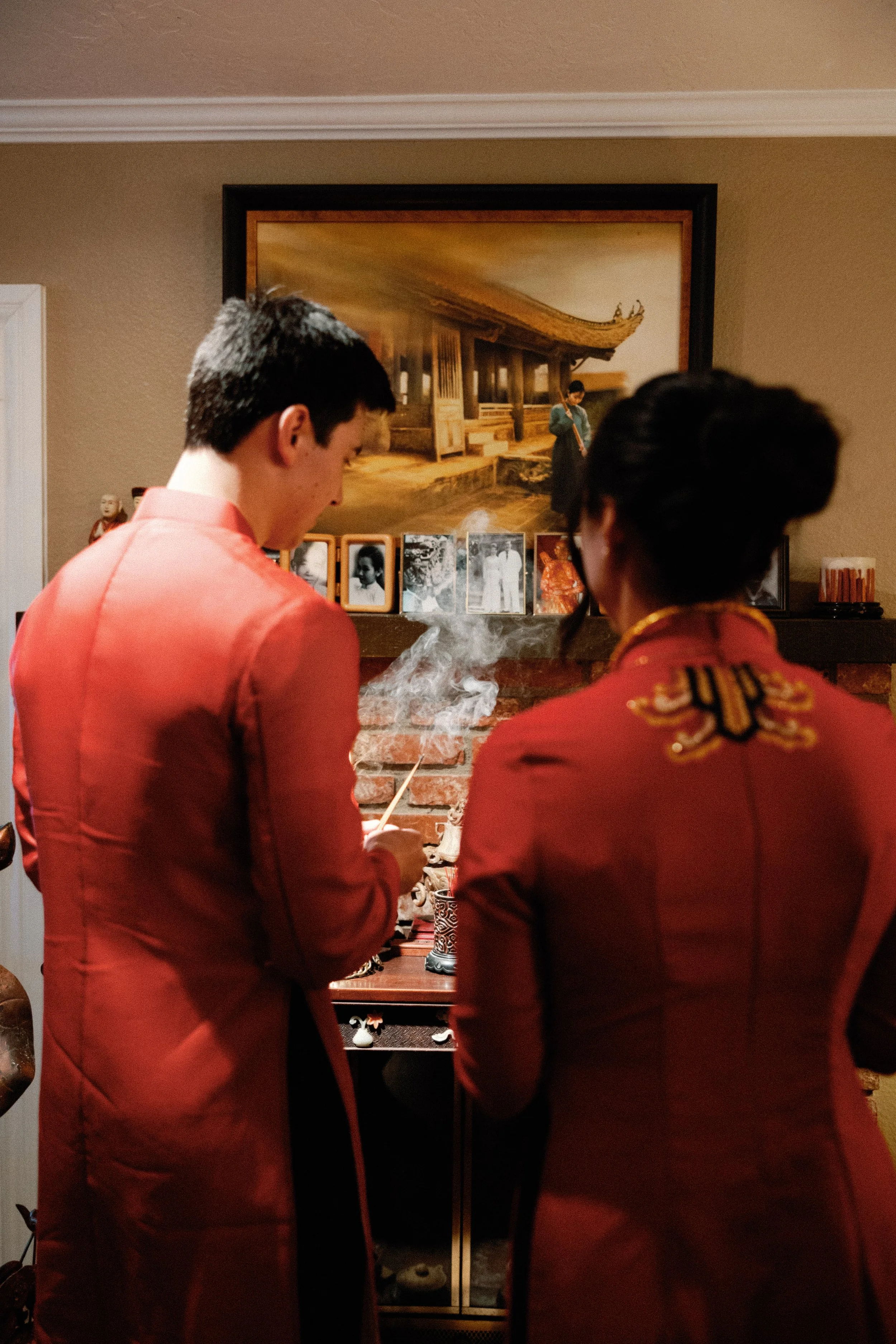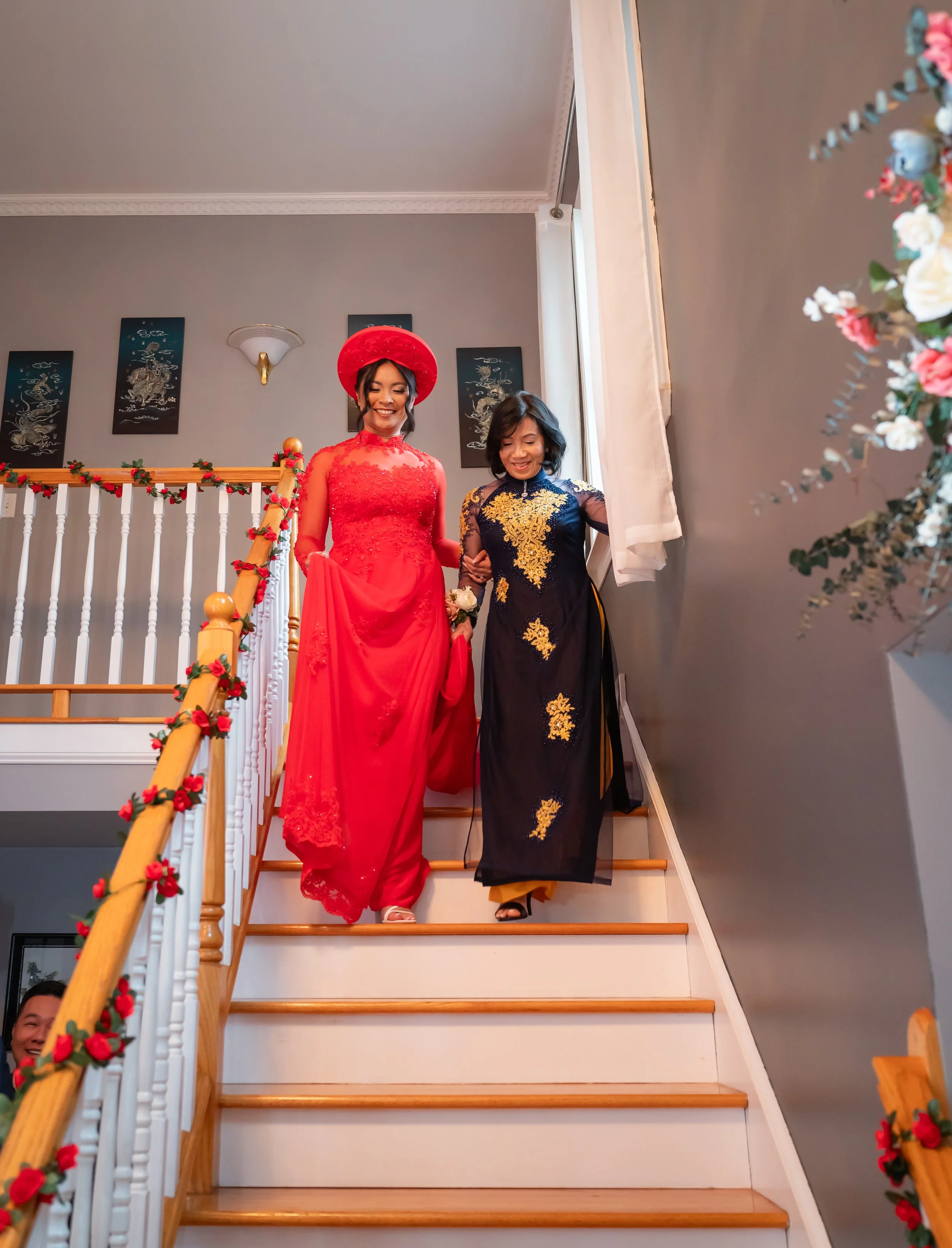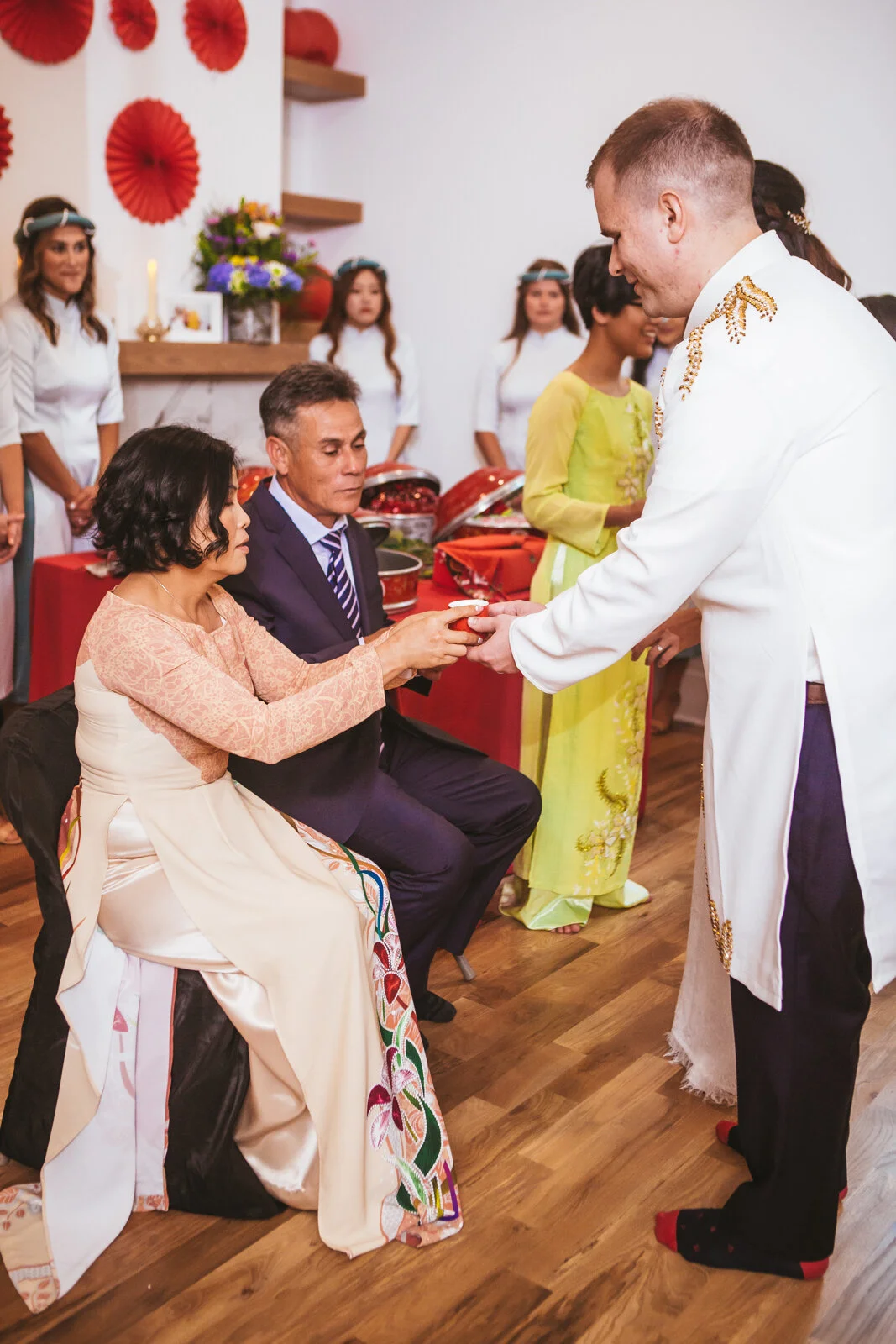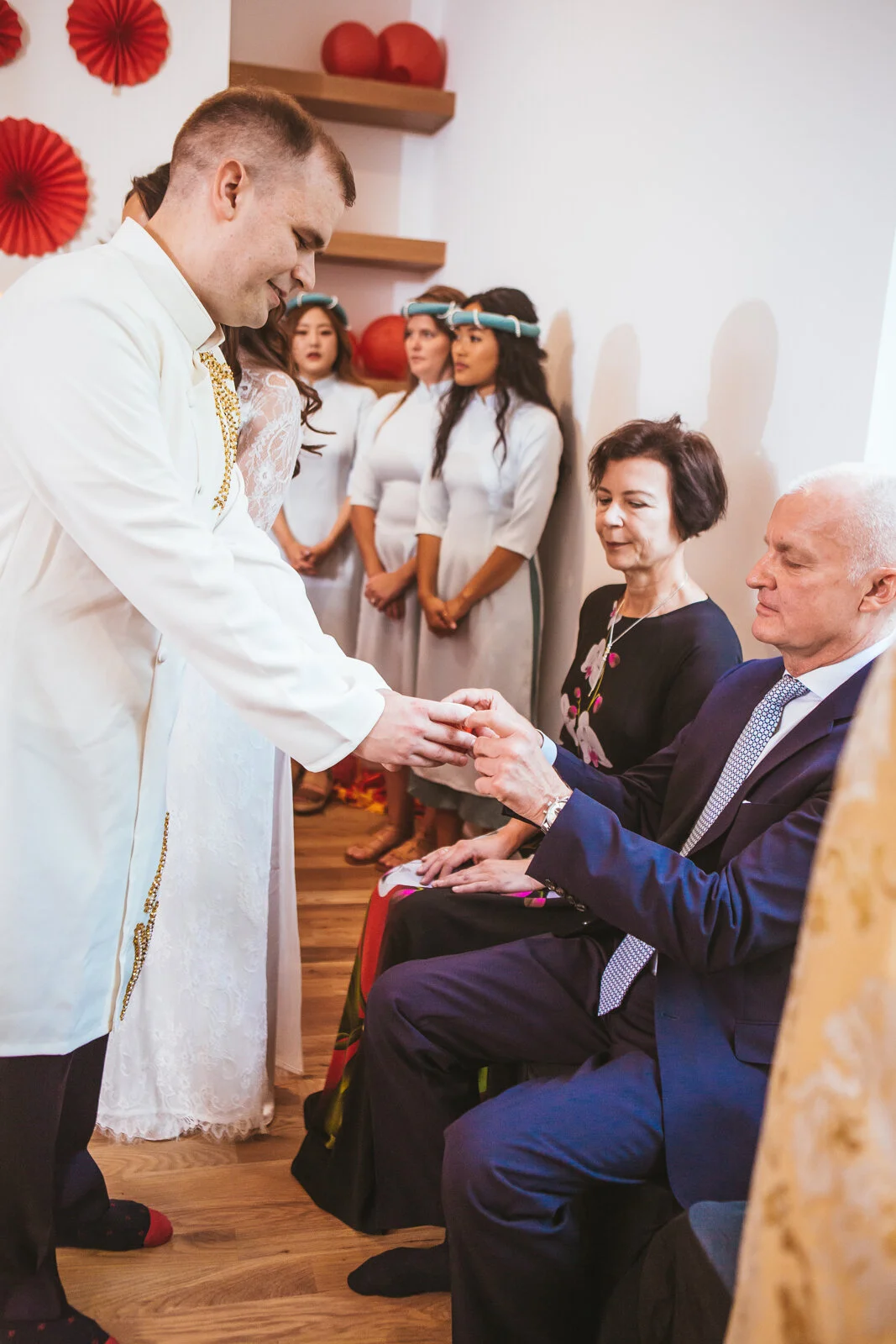How to Plan the Perfect Traditional Vietnamese Tea Ceremony/ Đám Hỏi
Planning a Vietnamese Tea Ceremony? Here’s What You Should Know.
As a tea ceremony coordinator and emcee with years of experience, I've had the honor of guiding countless couples through this deeply meaningful tradition. While this guide is packed with helpful insights to get you started, there are many cultural nuances, family expectations, and emotional layers that simply can’t be captured in a single post. That’s where professional support makes all the difference. If you're looking for someone to thoughtfully plan, coordinate, and lead your tea ceremony with heart, grace, and intention, I’d love to be part of your special day.
A Journey Through Time: Exploring the Rich History of Vietnamese and Chinese Tea Ceremonies
Tea ceremonies in Vietnamese and Chinese culture are far more than symbolic rituals. They are living expressions of love, respect, and heritage and is the most beautiful way of honoring the past while blessing the future.
In both cultures, tea is never just tea. It’s the language of gratitude, unity, and devotion. Every cup offered and every bow exchanged carries a history of generations before us.
Vietnamese Tea Ceremony: A Celebration of Family and Legacy
The Vietnamese tea ceremony, known as “Lễ Đám Hỏi,” holds a sacred place in Vietnamese weddings. It’s not merely a formality; it’s a moment that slows everything down and reminds us why we’re here — to honor love, family, and the legacy that binds them together.
At its core, this tradition represents deep respect and gratitude toward one’s parents and ancestors. It’s where two families officially become one, and where blessings, wisdom, and love are exchanged in their purest form.
Every ceremony I’ve witnessed feels different because no two families share the same story. Each one is shaped by its own customs, energy, and emotion, making it uniquely personal and heartfelt.
Chinese Tea Ceremony: An Ancient Expression of Honor and Harmony
The Chinese tea ceremony is a timeless reflection of respect, mindfulness, and connection. From the elegant precision of the Gongfu tea method to simpler family gatherings, it is a practice that embodies balance, grace, and intention.
In Chinese culture, tea symbolizes purity, patience, and peace. The act of serving tea to one’s elders and receiving blessings in return is not just tradition; it’s a promise to carry forward the values of respect and harmony that lie at the heart of every strong family.
To witness a tea ceremony is to see generations intertwined, past, present, and future, all connected through one simple, sacred ritual.
What to Wear for a Vietnamese Tea Ceremony
For Vietnamese weddings, the traditional attire is the áo dài, a long, form-fitting silk tunic worn over matching pants. It’s elegant, regal, and deeply symbolic, often custom-made to reflect the couple’s story and family heritage.
Bride: Brides usually wear a red or gold áo dài, colors that represent luck, prosperity, and happiness. The fabric is often detailed with intricate embroidery, phoenix or dragon motifs, and paired with a khăn đóng (the circular headdress). Some brides choose to match their áo dài with modern elements like sheer sleeves, subtle beading, or a train for a fusion of tradition and contemporary style.
Groom: Grooms traditionally wear a coordinating áo dài in complementary colors such as red, gold, ivory, or royal blue, often with a simpler design or matching embroidery to the bride’s. Many modern grooms pair the áo dài with tailored pants and loafers for a polished, refined look.
Family Members: Immediate family often wears áo dài in coordinated tones to create a cohesive, elegant visual during the ceremony. It’s a beautiful way to show unity between both sides of the family.
What to Wear for a Chinese Tea Ceremony
In Chinese culture, attire carries powerful symbolism. Every color, fabric, and accessory is chosen with intention to attract harmony and ward off negativity.
Bride: The traditional outfit is the qipao (also known as cheongsam) or the kwa, a two-piece embroidered jacket and skirt typically in red and gold. The kwa is especially significant in Cantonese culture, embroidered with dragons and phoenixes to symbolize balance and marital harmony. Modern brides sometimes start the tea ceremony in the traditional kwa and later change into a Western gown for the banquet.
Groom: The groom often wears a changshan or tang suit, which complements the bride’s attire. The colors are traditionally red or gold, though some modern couples choose navy, black, or dark maroon for a sophisticated update.
Family Members: Parents and elders often wear elegant attire in jewel tones or neutral colors, avoiding black or white, as these are traditionally associated with mourning.
Who attends the tea ceremony: The couple, parents, grandparents, closest family members, and wedding party
If you’re honoring both Vietnamese and Chinese roots, you can absolutely blend elements from each. Many couples wear Vietnamese áo dài for the ancestral portion of the ceremony, then transition into Chinese attire for the tea service, or vice versa. You can even design a hybrid look such as an áo dài in Chinese-inspired brocade, or a qipao with Vietnamese tailoring. What matters most is intention, that your attire feels authentic to you and pays homage to the cultures, families, and love stories that brought you here.
The Heart of It All
What I love most about the tea ceremony is that it’s not about perfection, it’s about presence. It’s the quiet heartbeat of the wedding day, intimate, emotional, and timeless.
It reminds us that while weddings celebrate two people in love, they also celebrate the families and histories that shaped them. And that’s what makes the tea ceremony so powerful.
Processional
The Vietnamese tea ceremony often begins with a joyful procession as the groom’s family arrives at the bride’s home, bearing beautifully prepared trays of gifts. It’s a moment filled with warmth and anticipation, where two families come together for heartfelt introductions and blessings at the altar. Every step feels rich with meaning, yet behind the beauty lies a rhythm that requires care, intention, and thoughtful coordination to ensure everything flows seamlessly.
Before anyone takes a sip, there’s always a quiet moment of pause to admire the tea’s aroma, its color, and the care that went into preparing it. When the first sip is shared together, it’s not just about tasting the tea but about feeling the connection it represents. The Vietnamese tea ceremony is a beautiful reminder to slow down, to be present, and to honor the love and gratitude shared among families and friends.
In the Chinese tea ceremony, every gesture carries meaning. The way the tea is poured, the order in which it’s served, and the graceful movements behind each cup all reflect respect, balance, and harmony. It’s a moment where generations meet, where wisdom is passed down, and where the act of serving tea becomes a language of love and reverence. Beyond its beauty, the ceremony teaches mindfulness and gratitude, reminding us that every sip is both a blessing and a promise to cherish the bonds that unite us.
Tea Ceremony
During the Vietnamese tea ceremony, the couple shares a deeply personal moment with their families, honoring their parents and expressing gratitude through a heartfelt tradition that carries generations of meaning. It is a beautiful exchange of love, respect, and blessing, one that anchors the day in emotion and legacy.
Similarly, the Chinese tea ceremony holds a sacred space for family connection and unity. It is a graceful reflection of respect, tradition, and the joining of two families through an intimate act that transcends words. Each gesture and exchange holds its own story, reminding everyone present that marriage is not just between two people but between two generations, two lineages, and two hearts coming together as one.
Post Ceremony
After the Vietnamese tea ceremony, the celebration flows into a joyful gathering, uniting families and guests in shared festivity. Both Vietnamese and Chinese tea ceremonies, though distinct in their practices, weave a common thread: they honor the art of tea as a means to connect people, express respect, and preserve cherished traditions. These rituals offer a glimpse into the cultural heart of Vietnam and China, highlighting the timeless power of ancient practices in today’s world.
Let’s Chat STAT!
To fully embrace these traditions, clear and effective communication is key, especially when guests speak different languages, such as English and Vietnamese or English. A bilingual host or emcee plays a vital role in ensuring everyone feels included and engaged. Fluent in both languages, they enrich the experience by offering culturally nuanced explanations, seamlessly switching between languages, and illuminating the symbolism behind each ritual. This fosters a deeper connection for guests unfamiliar with the customs.
An experienced tea ceremony coordinator and emcee brings both cultural insight and modern finesse, ensuring a seamless and meaningful event. From planning to guiding guests through each step, they convey the ceremony’s significance with clarity and respect, allowing everyone to fully appreciate the beauty and depth of this time-honored tradition.
Ready to create a truly memorable tea ceremony? Let's connect!
Photography: Gemini and the Bear Mai Tirella Erich Chen




